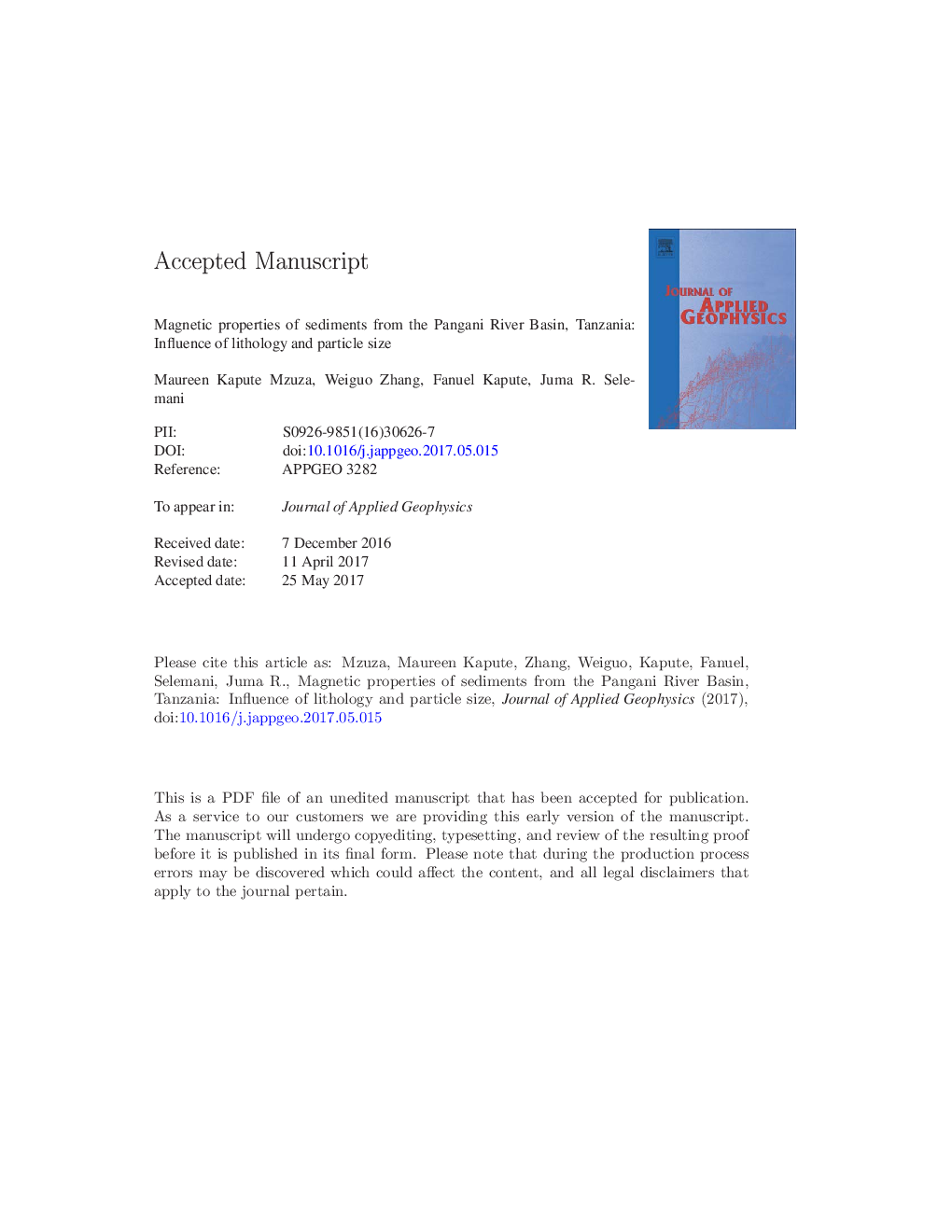| Article ID | Journal | Published Year | Pages | File Type |
|---|---|---|---|---|
| 5787122 | Journal of Applied Geophysics | 2017 | 32 Pages |
Abstract
Use of magnetic properties in tracing sediment source in river systems is valuable for proper management of soil erosion and dam siltation. This study investigated magnetic properties variation from the upstream down to the coast of the Pangani River Basin in Tanzania, East Africa. The influence of lithology and sedimentary sorting on magnetic properties from source to sink pathway has been discussed. Results show that lithology can explain the differences in magnetic properties among the tributaries in the upstream and in the lower reach of the main stream. Ferrimagnetic minerals mainly consist of magnetite and titanomagnetite, with the latter more abundant in the upstream tributary Kikuletwa River. Upstream sediments have higher ferrimagnetic mineral concentrations but coarser grain size than the mainstream sediments, especially the dam sediments. A decline in ferrimagnetic mineral concentration with fining grain size is also observed along the mainstream. Such a trend can be explained by hydrodynamic sorting effect, which is well documented elsewhere. This study demonstrates that lithology and sorting have strong effect on magnetic properties, which should be properly addressed when using magnetic method in assessing fluvial sediment source.
Related Topics
Physical Sciences and Engineering
Earth and Planetary Sciences
Geophysics
Authors
Maureen Kapute Mzuza, Weiguo Zhang, Fanuel Kapute, Juma R. Selemani,
